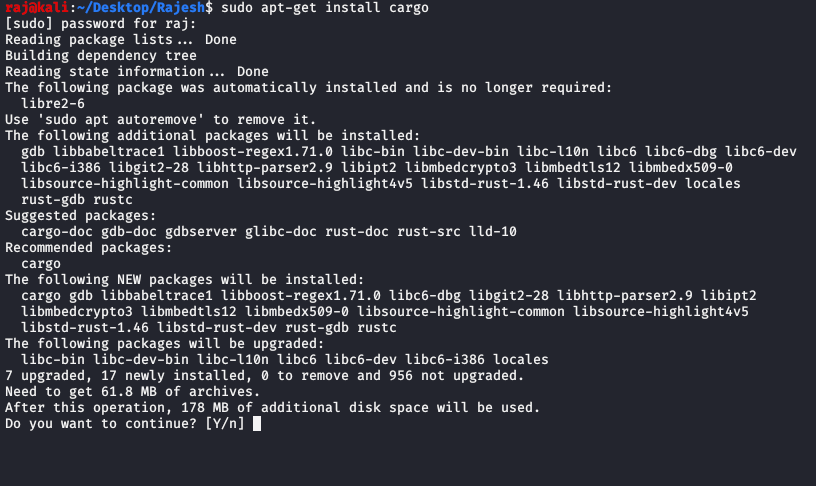Hello guy’s in this article we are going to discuss about how to install unimap on llinux and termux with easy way. let’s start.
What is Unimap?
Scan only once by IP address and reduce scan times with Nmap for large amounts of data. Unimap is an abbreviation of “Unique Nmap Scan“
Tested platform?
- Windows
- Termux
- Linux
- Mac
- Osx
Why we use unimap?
If you have plans to run an Nmap to a whole organization you need to consideer that surely tens, hundreds or even thousands of subdomains will point to the same IP address and there will come a point where it becomes almost impossible to continue scanning. Also your IP may end up blocked due to multiple scans to the same remote host address among other things.
How this work’s?
Unimap uses its own technology to initially resolve the IP addresses of all subdomains, once this process is finished, it creates a vector with the unique IP addresses and launches a parallel scan with Nmap according to the number of threads that the user has configured, at the same time, it analyzes the data from the files created with Nmap to find out which information corresponds to each IP. Finally, Unimap relates the information of each of the IPs associated with the subdomains. So, for example, if you have 50 subdomains that point to the same IP, you will only do one Nmap scan but you will have all the data associated with each of the subdomains at the same time, in a large scan it saves days or weeks.
How to install?
Step 1:
git clone https://github.com/Edu4rdSHL/unimap.git


Step 2:
cd unimap

Step 3:
sudo apt-get install cargo
For termux user follow the below command to install cargo.
pkg install cargo


Step 4:
cargo build –release


How to use?
Unimap requires root/administrator privileges to launch Nmap TCP SYN (Stealth) Scan, we use it for accuracy and performance reasons. If you are on Linux or Linux-based, just use a root shell or run the tool with sudo, in Windows you can open a Command Prompt (CMD) as Administrator and run the tool as usual.
- Flags doesn’t require/accept values.
| Flag | Description |
|---|---|
| –fast-scan | Use fast scanning for ports (no version detection) and just scan the top 1000 ports. |
| -o, –output | Write to an output file. The name of the output file will be unimap-log-$date. |
| -k, –keep-nmap-logs | Keep Nmap XML files created in the logs/ folder for every scanned IP. This data will be useful for other tasks. |
- Options require values.
| Option | Description |
|---|---|
| –resolvers | Path to a file (or files) containing a list of DNS IP address. If no specified then 1.6k of built-in valid DNS servers from public-dns.info are used. |
| -f, –file | Use a list of targets writen in a file as input. |
| –iport | Initial port if you want to scan a custom range. |
| –lport | Last port if you want to scan a custom range. |
| –logs-dir | Path to save the CSV data of the process. Usefull when doing automated scans with the -o option. |
| –min-rate | Controls Nmap’s –min-rate. Default to 30000. |
| -t, –target | Host if you want to scan only one and extract the interesting data. |
| –threads | Number of threads. Have in mind that the same number of Nmap scans will be started at time. Default to 30. |
| -u, –unique-output | Write output to an specified filename. |
Examples?
- unimap -f targets.txt -u log.csv performs an full scan and write output to log.csv.
- unimap -f targets.txt –fast-scan -o performs an fast scan and save the logfile to logs/ folder.
- sudo unimap -f targets.txt –iport 1 –lport 1000 –min-rate 1000 scan ports from 1-1000 doing service and versions detection (if you want a fast scan use the –fast-scan flag) with an min-rate of 1000.
Considerations?
- Unimap is preconfigured to run on faster networks (cloud VPS), if you run a scan in a home network that doesn’t have too much capacity you will end up disconnected from network.
- The previously doesn’t mean you can not use Unimap from your home, just adjust the number of –threads and –min-rate (being it the most important).
- We do not wrap Nmap in any way or scan ports on our own, we use the right Nmap options to get the most performance, Nmap rocks and it’s the faster ports scanner that currently exists.
- We parse Nmap output data and give you more understandable output while also preventing you to scan the same IP several times, it’s our main goal .

إرسال تعليق